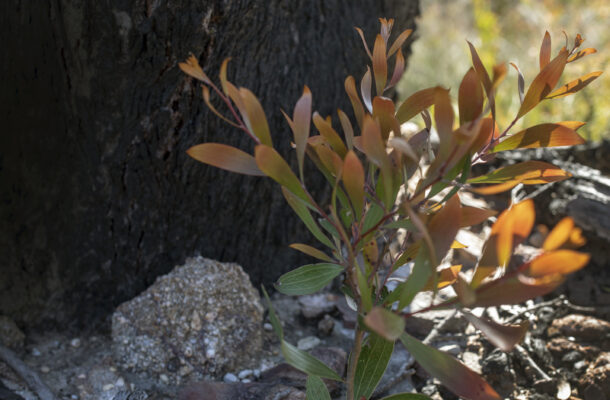The word for world is forest

New research, led by Western Sydney University’s Dr Jürgen Knauer from the Hawkesbury Institute for the Environment, published today in international journal Science Advances, paints an uncharacteristically upbeat picture for the planet.
Using realistic ecological modelling the research team assessed a high-emission climate scenario, testing how vegetation carbon uptake could be expected to respond to global climate change up to the end of the 21st century.
The findings of the study suggest the world’s plants may be able to take up more atmospheric CO2 from human activities than previously predicted.
Lead Researcher Dr Jürgen Knauer emphasises that while the world’s governments should not neglect their current obligations to reduce carbon emissions, the research highlights multiple benefits to conserving vegetation through the planting of more trees and protecting existing vegetation.
“Plants take up a substantial amount of carbon dioxide (CO2) every year, thereby slowing down the detrimental effects of climate change, but the extent to which they will continue this CO2 uptake into the future has been uncertain,” explains Dr Knauer.
“What we found is that a well-established climate model that is used to feed into global climate assessments by the likes of the IPCC predicts stronger and sustained carbon uptake until the end of the 21st century when extended to account for the impact of some critical physiological processes that govern how plants conduct photosynthesis.
“We accounted for aspects like how efficiently carbon dioxide can move through the interior of the leaf, how plants adjust to changes in temperatures, and how plants most economically distribute nutrients in their canopy. These are three really important plant response mechanisms that affect a plant’s ability to ‘fix’ carbon, yet they are commonly ignored in most global models.”
Photosynthesis serves as a natural climate change mitigator by mopping up some of the additional carbon dioxide deposited in the atmosphere by fossil fuel emissions. Plants and ecosystems store some of the additional carbon they take up in long-term pools such as the wood of growing trees, and slow-decomposing organic matter in the soil. In this way, increased uptake of CO2 by vegetation can lead to an increasing land carbon sink, and indeed, this has been reported by researchers over the last few decades.
It has long been unclear how vegetation will respond to CO2, temperature and changes in rainfall that are significantly different from what is observed today. Scientists have suggested that more frequent and severe climatic extremes, such as more intense droughts and severe heat, could significantly weaken the sink capacity of terrestrial ecosystems.
The authors tested different versions of the model that varied in complexity and realism in terms of how plant physiological processes are accounted for. The simplest version ignored the three critical physiological mechanisms associated with photosynthesis while the most complex version accounted for all three mechanisms.
The results indicated the more complex model set-up, that better reflected the latest plant physiological understanding, consistently projected stronger increases of vegetation carbon uptake globally. The processes accounted for reinforced each other, so that effects were even stronger when accounted for in combination.
Professor Ben Smith, Research Director of Western Sydney University’s Hawkesbury Institute for the Environment, was excited about the impact of these findings and their wider relevance to the community.
“Our understanding of key response processes of the carbon cycle, such as plant photosynthesis, have advanced dramatically in recent years. It always takes a while for new knowledge to make it into the sophisticated models we rely on to inform climate and emissions policy. Our study demonstrates that by fully accounting for the latest science in these models can lead to materially different predictions,” said Professor Smith.
“Our findings are likely to be impactful, inspiring other teams to update their models in order to verify whether the tendency we observe towards a larger future land sink is replicated by other models. Only when a representative suite of global models agree on a key trend or pattern, do we rely on that trend or pattern to guide policy.
“These kinds of predictions have implications for nature-based solutions such as revegetation as one tool, among a portfolio of approaches, that will be needed to reach net zero. Our findings suggest these approaches could have a larger impact in mitigating climate change and over a longer period of time than we previously thought.”
Professor Smith was also quick to agree that this does not mean a simple and quick solution to the world’s current environmental crisis.
“Simply planting trees will not solve all our problems and can at best contribute over a transitional period as society weans itself off fossil fuels. Ultimately, we need to eliminate emissions from all sectors. Growing trees alone cannot offer humanity a get out of jail free card” he said.
Open Forum is a policy discussion website produced by Global Access Partners – Australia’s Institute for Active Policy. We welcome contributions and invite you to submit a blog to the editor and follow us on Twitter, Facebook, Linkedin and Mastadon.












